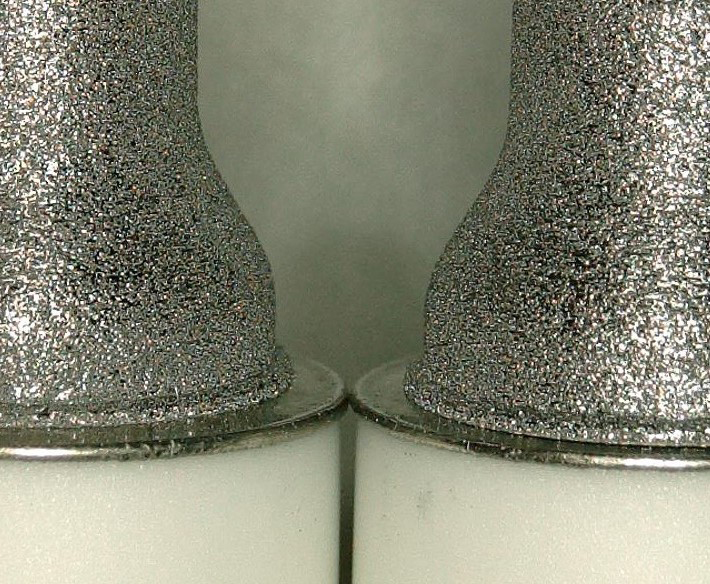Background
Mass spectrometers for space and high vacuum applications are typically composed of a mixture of metallic and ceramic components. The metal components are held at different voltage potentials with ceramic spacers serving as electrical insulators. Attachment of these dissimilar materials to one another may be accomplished in a variety of ways. Brazing is one metal to ceramic joining method that can minimize parts count and mass without sacrificing instrument performance.
One of the challenges in brazing metals to ceramics is the management of joint interface stresses arising from the mismatch in thermal expansion between metals and ceramics. The entire assembly is heated and maintained at a high temperature to allow the braze material to flow into the joint by capillary action. This research program explored additive manufacturing (AM) technology as an alternative to brazing. AM could provide a novel way to forge hermetic bonds between metals and ceramics for space and high vacuum use.
This effort is part of the focused internal research program Metals Additive Kickoff Emphasizing Research Synergies (MAKERS).
Approach
A series of AM test specimens and assemblies of increasing complexity were fabricated and tested. Individual AM parts, AM parts welded to one another and to conventionally manufactured parts, and finally AM parts bonded to ceramics were assessed. Leak tightness measurements and detailed visual inspection of manufactured joints were performed.
Accomplishments
Grade 23 titanium test parts produced by laser powder bed fusion (LPBF) were produced and evaluated for placement precision within the AM build volume. The AM parts produced were analyzed for dimensional accuracy, machinability, weldability, and hermeticity. All test parts met minimum requirements and were deemed sufficient to continue further investigation.
Methods and tools for conducting materials bonding experiments with a commercial LPBF machine were developed and executed. Bonding trials between titanium LPBF parts and alumina ceramic were conducted with SwRI-developed tooling and procedures. The research program analyzed nuances in the melt pool at the powdered metal to ceramic interface to generate bonded metal and ceramic assemblies. At the conclusion of the study, indications were positive that LPBF can be used to create hermetic joints with alumina.

Figure 1: Additively manufactured titanium parts bonded to alumina disks.
